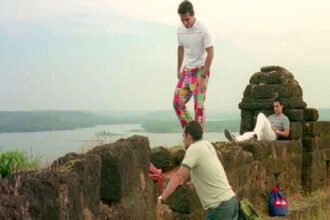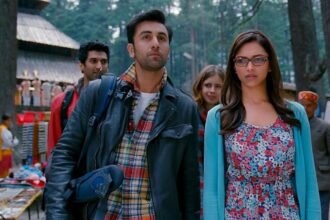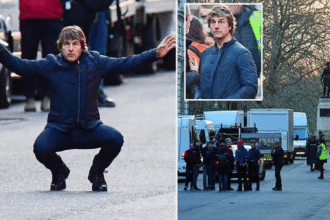From Bayou Backdrops to Historic Streets: Exploring Sinners (2025) Filming Locations
Sinners (2025), Ryan Coogler’s sultry Southern vampire thriller, transports viewers to a 1932 Mississippi Delta town teeming with blues music and supernatural dread. In reality, however, the production ventured one state over into Louisiana, leveraging its rich landscapes and historic locales to stand in for Depression-era Mississippi. From quaint historic districts transformed into 1930s streets to remote bayous alive with wildlife, the film’s shooting sites are as intriguing as the story itself. Below, we journey through all the known filming locations – cities, landmarks, and even studios – delving into why each was chosen, notable scenes shot there, and the unique challenges the crew faced along the way.
Donaldsonville, Louisiana – A 1930s Main Street Revival
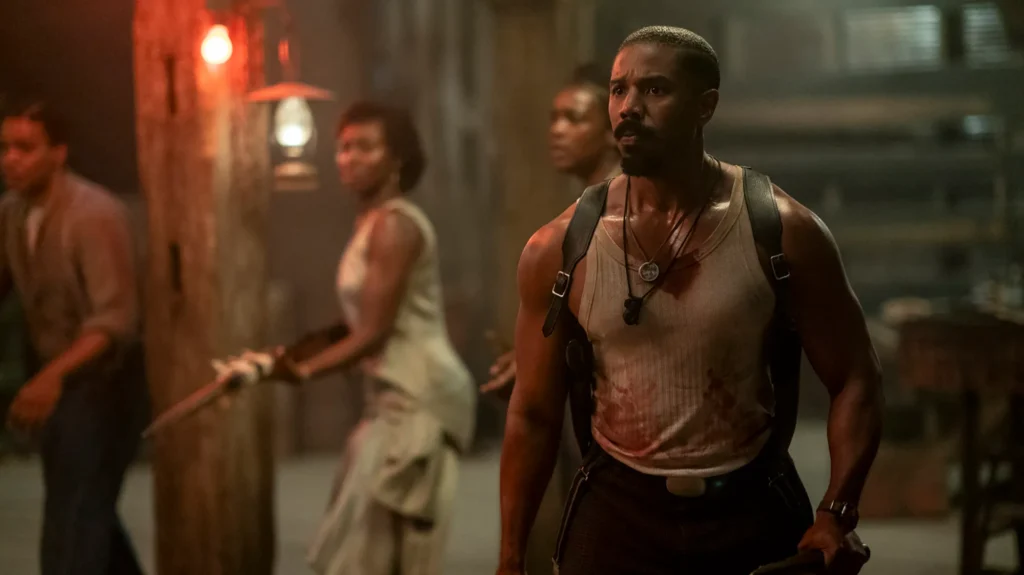
One of the centerpiece locations for Sinners was the small city of Donaldsonville, which served as a stand-in for the film’s fictional Clarksdale, Mississippi. In April 2024, Donaldsonville’s historic 200 block of Railroad Avenue – a street lined with 19th-century buildings – was radically transformed to resemble a 1932 Delta town. The production design team turned the modern asphalt road into a dirt thoroughfare, repainted facades, and dressed the set with period details. Multiple antique 1930s-era cars were brought in and entire storefronts were constructed or modified to fit the era. Construction coordinator Erik Van Haaren oversaw the creation of over a dozen vintage shopfronts on this street, including Chow’s grocery store, a gas station, a movie theater, a barbershop, and a hotel, all based on historic references provided by Coogler.
St. Bernard Parish, Louisiana – Annie’s Oak-Shaded Plantation
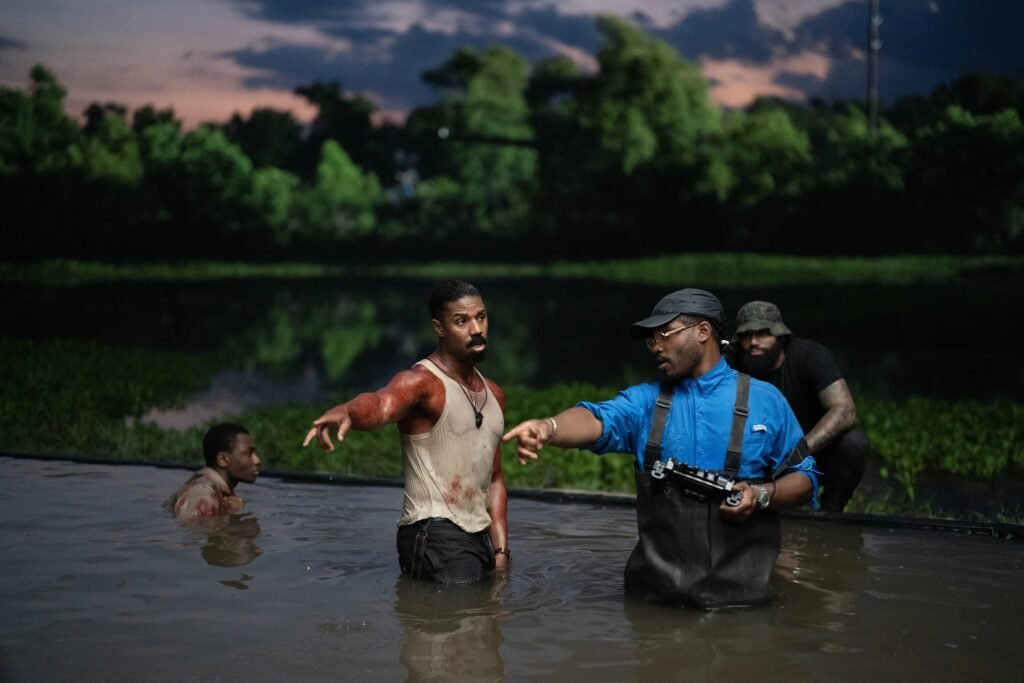
Another notable location lies in St. Bernard Parish (just outside New Orleans), where the filmmakers found the ideal spot for “Annie’s house” – a small farmhouse that plays a key role in the story’s early acts. In Sinners, Annie (Wunmi Mosaku) lives in a humble home under a canopy of ancient oak trees, the place where she and Smoke reunite after his years up North. Production designer Hannah Beachler revealed that director Ryan Coogler specifically wanted this setting “built under a canopy of oaks from the 1800s.” Beachler, a Louisiana native, immediately thought of an old plantation site in St. Bernard Parish that she knew from previous work. This property – lovingly maintained by a local caretaker named Lou Pomes – offered gnarled live oak trees draped in moss and a historic rural backdrop that perfectly embodied the Old South atmosphere Coogler envisioned.
On this oak-shaded estate, the crew either utilized an existing 19th-century structure or built a period-appropriate house facade to represent Annie’s home (the production notes don’t name the plantation, but its evocative description suggests it was likely a lesser-known private site rather than a famous tourist plantation). The scenes at Annie’s house have a deeply personal feel – it’s where Smoke and his estranged wife Annie confront their past and her hoodoo beliefs amidst the eerie quiet of the mossy oaks. Shooting here came with its own challenges: working under massive trees is beautiful but requires careful lighting (to pierce the deep shade) and awareness of local critters.
Still, the St. Bernard location paid off by providing an authentic, atmospheric setting that grounded the film’s early emotional scenes in real Southern scenery. For curious visitors, St. Bernard Parish offers a glimpse of old Louisiana at sites like the nearby St. Bernard State Park – though Annie’s cabin itself was a temporary movie set, the timeless oak grove ambience is very real.
Braithwaite, Louisiana – Building a Juke Joint in the Wilds
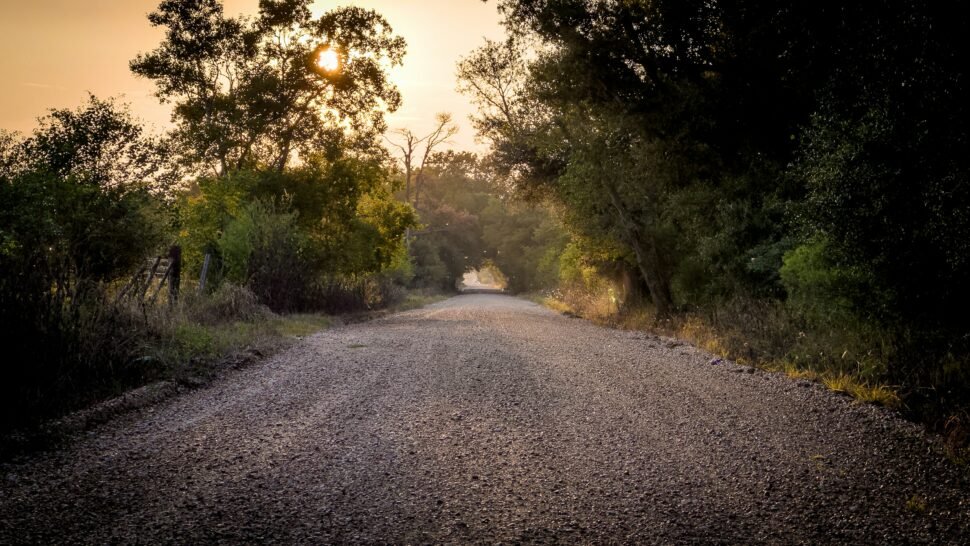
When it came to the film’s central location – the juke joint where music and mayhem unfold – the filmmakers needed an isolated, almost primordial setting. They found it in Braithwaite, an unincorporated area about 80 miles from Donaldsonville, deep in Louisiana’s bayou country. The “meat of the movie” takes place at this juke joint – an old warehouse hastily converted by Smoke and Stack into a blues club outside of town. To film these pivotal sequences, production designer Hannah Beachler and location manager Elston Howard sought a remote spot “with the territorial aspects of water and thick with trees to match the film’s tone.” Braithwaite fit the bill perfectly. The location secured was actually a defunct golf course ravaged by Hurricane Katrina years before – now overgrown with brush and crawling with wildlife. This gave the crew a blank (if challenging) canvas to build the juke joint set from the ground up.
On that abandoned Braithwaite golf course, the art department constructed a large corrugated-metal warehouse structure to serve as the juke joint exterior. The surrounding area’s wild state provided an authentically eerie backdrop: sprawling oak and cypress trees, swampy ground, and no civilization in sight. Howard recalled wading through “four-to-six-feet high ragweeds” on his first scout, worrying about water moccasin snakes and alligators lurking nearby. Filming out there was indeed arduous – crews contended with heat, mud, and nature at its rawest.
Yet that isolation paid dividends on screen: the juke joint scenes feel enveloped by dense, humid night and the unknown wilderness beyond its walls. Key action sequences – including musical performances that literally raise spirits and bloody vampire attacks – were brought to life at this Braithwaite set. The production even built the interior of the club on site inside the warehouse shell, dressing it up as an authentic 1930s barrelhouse. By the end of shooting, the cast and crew had created what looks like a real juke joint in the middle of nowhere – a testament to Louisiana’s ability to host large-scale set pieces in remote locations. (Don’t go looking for the juke joint now, though; the structure was temporary and has since been removed.)
Labadieville & Bayou Parishes – Rural Isolation and Cotton Fields
To capture the open rural landscapes of the Mississippi Delta, Sinners also filmed in the quiet countryside of south Louisiana, particularly around Labadieville in Assumption Parish (with forays into neighboring parishes like Lafourche). This region provided the production with sprawling fields, farms, and bayous – ideal for the story’s more isolated and suspenseful moments. Labadieville is a small town amid sugarcane country, and it offered serene yet desolate scenery that heightened the film’s tension. According to travel reports, this calm, out-of-the-way area served as a backdrop for numerous outdoor scenes, helping create a palpable sense of isolation on screen. In the movie, whenever characters venture beyond the town or juke joint – whether traveling down dirt roads, meeting in fields under big sky, or confronting evils in remote barns – it’s likely that Labadieville’s environs or similar locales were used to stage those moments.
One particularly interesting challenge arose in depicting the Delta’s agriculture. The film is set in cotton country during the 1930s, but southern Louisiana today is mainly sugarcane country. To authentically portray cotton fields on camera, the production team actually planted cotton on location for the shoot. Beachler noted that they had to sow and grow rows of cotton plants in Louisiana soil so that scenes would feature the correct crop – an impressive dedication to period accuracy.
These fields (most likely in Assumption or nearby parishes) become part of the film’s visual texture, from wide establishing shots of the Delta landscape to harrowing chase sequences where rows of crops flutter in the night breeze. Local residents around Labadieville and the parish seat of Napoleonville may recognize some familiar farms or backroads in the finished film, even though they’ve been cleverly redressed as 1930s Mississippi. Filming in these rural areas was logistically simpler than the swamps of Braithwaite, but still required bringing in vintage props, farm equipment, and practical effects to transform modern farmland into a Depression-era scene. The payoff is evident: those sweeping country vistas and quiet backwater vibes lend Sinners much of its suspenseful atmosphere.
It’s worth noting that nearby Thibodaux (in Lafourche Parish, about 15 minutes from Labadieville) also hosted filming. Thibodaux and its surroundings are rich in historic sites like old plantations and sugar mills, which the production likely utilized for additional period sets. In a film that features juke joints and churches, one can imagine an old plantation chapel or mill warehouse around Thibodaux being repurposed as a location. While specifics aren’t public, the presence of the Sinners crew in Thibodaux was confirmed by local news. This suggests that one or more scenes – perhaps a sequence needing a larger town setting or a different style of architecture – were shot there. Thibodaux’s contribution, combined with Labadieville’s rural vistas, helped Sinners capture both the small-town charm and remote bayou eeriness inherent to its story.
Bogalusa, Louisiana – Rustic Mill Town and Train Depot
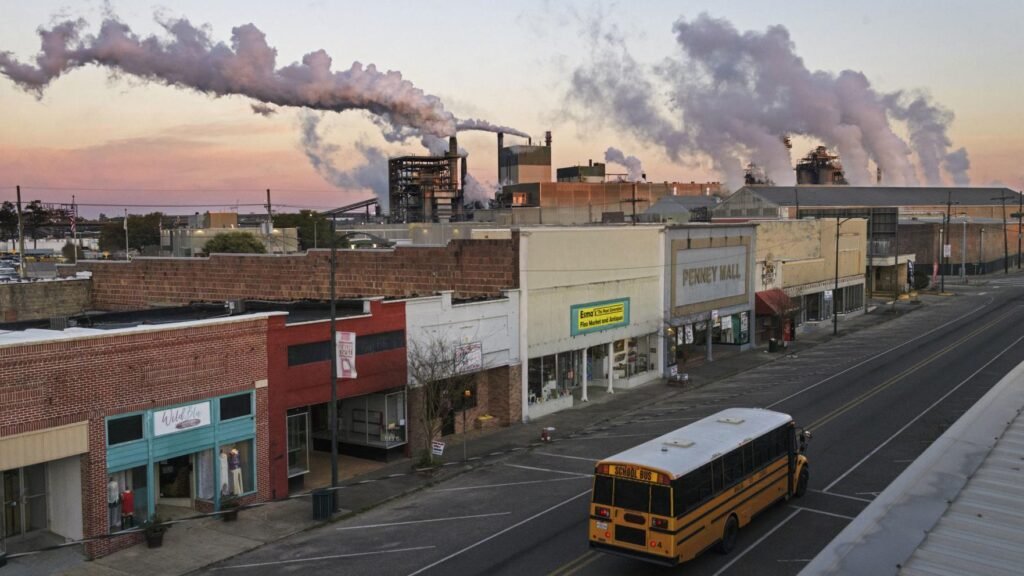
On the opposite end of the state, the production also traveled to Bogalusa, Louisiana, a small mill town near the Mississippi border, to film certain sequences. Bogalusa’s rustic and wooded surroundings made it a fitting stand-in for the northern fringes of the Deep South.
In particular, Bogalusa offered two valuable location assets: dense woods (for any scenes requiring a forested backdrop) and a vintage train depot. Early in the film, the Moore brothers return home by train, and it appears the Bogalusa train station was used to depict that 1930s arrival. Local social media buzzed in mid-2024 when a Sinners scene was shot at the town’s historic train depot, complete with an old-fashioned locomotive and extras in period costume waving to arriving passengers. This provided an authentic period-correct railway setting without the need for CGI – an area where Bogalusa’s history as a former lumber hub (with old rail lines) really shined.
Beyond the train station, the wooded areas around Bogalusa gave the filmmakers a suitably creepy canvas for horror-centric moments. A production Q&A noted that Bogalusa offers “rustic and wooded areas, perfect for [the film’s] horror elements”. It’s easy to imagine that any tense nighttime chase through moonlit woods or a vampire stalking scene might have been shot in the thickets near Bogalusa.
The natural pine forests and swampy creeks of Washington Parish (where Bogalusa is located) project an unsettling beauty on camera – likely used to amplify the film’s suspense when the action moves outside the juke joint’s immediate vicinity. Bogalusa’s mayor even remarked that hosting the Sinners production was an economic and morale boost for the town, as Hollywood trucks rolled in and local extras got a chance to participate. For travelers, Bogalusa might be off the typical tourist path, but film fans now have a reason to visit its train depot or drive the country roads seen in Sinners and appreciate the town’s contribution to the movie’s Southern Gothic atmosphere.
New Orleans – Production Hub and Sweltering Challenges
While the story of Sinners unfolds in rural Mississippi, the production was headquartered in New Orleans, Louisiana, which served as the crew’s base of operations and a key filming locale. New Orleans is a major film industry hub – one of the few places with the infrastructure and talent pool capable of pulling off a period supernatural epic of this scale. Producer Sev Ohanian explained that only a couple of places in the U.S. could mimic 1930s Mississippi effectively, and “New Orleans just happened to be a really great [choice] because the crew base is amazing [and] it had the facilities that we needed.” Indeed, Greater New Orleans offered soundstages, prop houses, and experienced technicians essential for building Sinners’ ambitious sets.
It’s likely that some studio work occurred here – for instance, complex interior scenes or special effects sequences (such as those involving water or fire) may have been shot on a soundstage in New Orleans for safety and control. The city’s diverse architecture also came in handy. Although most of the “town” exteriors were done in Donaldsonville, New Orleans’ own historic neighborhoods could have doubled for other urban settings or provided additional backdrop shots. (One rumor suggests that an old church in New Orleans was used for interior scenes of the pastor’s church in the film, given the production designer’s homage to certain beamwork designs, though specifics remain under wraps.)
What is well documented is that shooting in New Orleans during the summer of 2024 was intense. The cast and crew braved extreme heat and sudden thunderstorms, which at times shut down production. Sinners was filmed through Louisiana’s spring and early summer, and as producer Rebecca Cho noted, “New Orleans is known for its rain and its lightning.” During one crucial outdoor night shoot – a big dance sequence under the stars – the team battled weather delays from persistent lightning storms and downpours.
They weren’t even sure if they would get the shot, as thunderclouds kept rolling in. Actress Li Jun Li recalled that “it was hot, it was humid, and it was full of bugs,” and the cast had to keep each other motivated through the uncomfortable conditions. Despite these challenges, filming wrapped successfully on July 17, 2024, in large part thanks to New Orleans’ robust support network for filmmakers and the dedication of the local crew.
New Orleans’ contribution to Sinners also extended to post-production resources – for example, sound editing was partly done at Skywalker Sound’s satellite facility (for the immersive blues soundtrack), and local vendors provided period costumes and props. In the end, though viewers may not actually see the French Quarter or New Orleans landmarks in Sinners (since the film stays focused on the fictional Mississippi town), the city’s influence is behind the scenes in every frame. New Orleans made it feasible to film a 1930s vampire saga with such authenticity. As Coogler’s team proudly pointed out, Sinners was filmed entirely in Louisiana, proving that the state could bring eerie bayous, juke joints, and blues-soaked streets to life for a global audience.
Other Louisiana Filming Sites and Notable Mentions
In addition to the major locations above, Sinners utilized several other Louisiana locales during production – each contributing a piece to the film’s tapestry. According to local casting notices and news reports, the shoot also touched down in:
- Belle Chasse, LA – a community south of New Orleans (Plaquemines Parish). Belle Chasse is near Braithwaite, and while details are scarce, it might have served as a staging area or provided a specific location (perhaps a ferry crossing or an industrial site) during the Braithwaite shoot. The Belle Chasse ferry, for instance, is a classic Mississippi River crossing that could evoke a bygone era, and there were indeed public advisories of filming activity around the ferry route during production. It’s also possible that some crew stayed in Belle Chasse or that the production used facilities at the Naval Air Station Joint Reserve Base there for equipment and parking.
- Tickfaw & Hammond, LA – small towns in Tangipahoa Parish, north of Lake Pontchartrain. These areas are known for pine forests, swampy rivers (Tickfaw River), and rural roads. It’s likely the production scouted here for particularly dense woods or swamp scenes. Tickfaw has a state park with protected swamp habitat – perfect if Coogler needed authentic bayou footage (perhaps for scenes of vampires lurking in the wild). Hammond, a nearby city, could have provided logistical support (hotels, etc.) and possibly an accessible rural look of its own. While we don’t have confirmed scene details, the inclusion of Tickfaw and Hammond in the filming list suggests Sinners didn’t leave any creepy corner of Louisiana unexplored.
- Napoleonville, LA – another Assumption Parish town near Labadieville. Napoleonville boasts historic buildings and sits along Bayou Lafourche. Given its proximity, any scenes shot in Labadieville might have spilled over into Napoleonville’s vicinity. The production might have used a specific site here – for example, Assumption Parish has some old churches and even plantations (like Madewood Plantation) which could serve as ready-made 1930s sets. Napoleonville’s mention in casting calls indicates it was on the itinerary, possibly hosting scenes requiring a bit of small-town architecture or additional cotton-field settings.
- LaPlace, LA – a town in St. John the Baptist Parish, west of New Orleans. A Baton Rouge news piece explicitly noted that Sinners filmed in LaPlace as well. LaPlace sits along the east bank of the Mississippi and is adjacent to swamplands and the Bonnet Carré Spillway. It’s plausible the production used a location here for a swamp chase or perhaps for infrastructure that wasn’t available elsewhere. (LaPlace is near an active rail line and old industrial sites – one could imagine a scene set at a river dock or warehouse filmed here.) Without official confirmation, we only know it was part of the shoot, thanks to local crew being involved.
Collectively, these supporting locations demonstrate how Sinners truly blanketed Louisiana in search of the perfect backdrops. The filmmakers cherry-picked elements from each place – a street of period buildings here, a canopy of oaks there, a lonely swamp, a historic train, open fields – and melded them into the film’s richly detailed world. It’s a testament to the state’s diverse landscapes and the production’s commitment to authenticity that casual viewers would assume Sinners was shot in Mississippi, not realizing the magic was assembled across dozens of Louisiana sites.
Also Read: Mission: Impossible The Final Reckoning filming locations
By delving into cities like Donaldsonville and New Orleans, quiet communities like Labadieville and Braithwaite, and many points in between, Sinners achieved a vivid sense of place that anchors its horror-fantasy narrative. Each location came with its own backstory and hurdles – from converting modern streets into 1930s set pieces, to building a juke joint in snake-infested wilds, to enduring Gulf Coast summer storms.
These challenges were met with creativity and grit by the cast and crew, resulting in a film environment that feels at once authentic and otherworldly. Fans of the movie can now retrace this production journey, knowing the real Louisiana places behind the on-screen Mississippi Delta. Whether it’s walking along Railroad Avenue in Donaldsonville (now back to its 21st-century look) or imagining the echoes of blues music in a deserted Braithwaite field, visiting these filming locations offers a new appreciation for how Sinners fused history, geography, and cinematic vision into a truly memorable setting.





